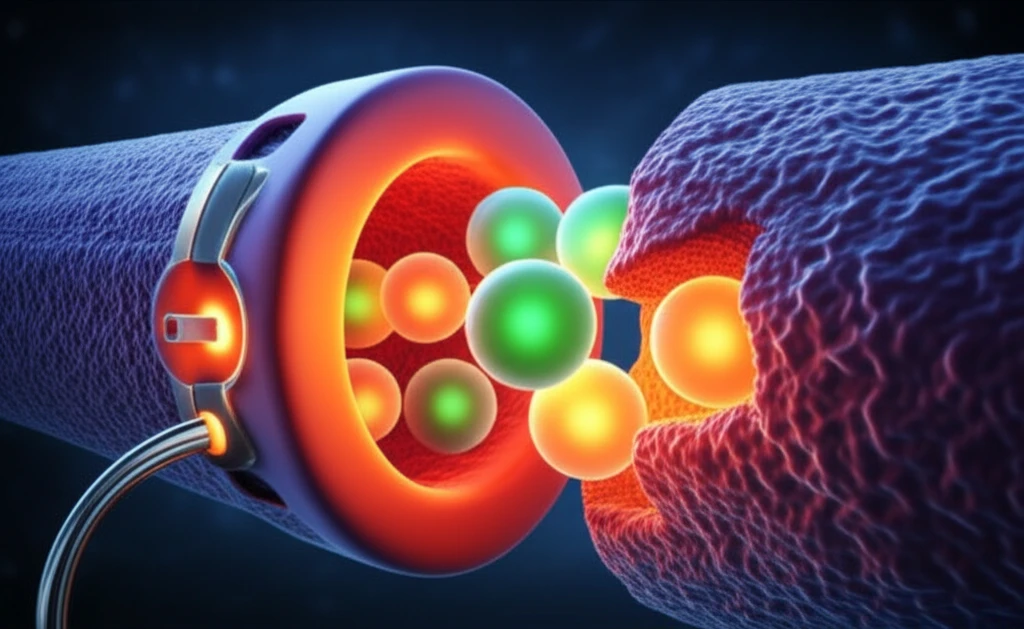
Decoding Calcium Signals: How a Single Protein Switch Could Unlock Better Health
"New research identifies a key molecular determinant that fine-tunes STIM2 activation, potentially paving the way for targeted therapies in calcium-related diseases."
Calcium ions are essential for life, regulating everything from muscle contractions to nerve impulses. The ebb and flow of calcium within our cells is a carefully orchestrated dance, and any disruption can lead to a cascade of health problems. Central to this calcium choreography are STIM1 and STIM2, proteins that act as calcium sensors within the endoplasmic reticulum (ER), a major calcium storage unit inside cells.
When calcium levels in the ER drop, STIM1 and STIM2 spring into action. They move to the plasma membrane, the cell's outer boundary, and trigger an influx of calcium from outside the cell. This process, known as store-operated calcium entry (SOCE), is crucial for maintaining calcium balance and supporting various cellular functions. While STIM1 has been extensively studied, STIM2's role has remained more mysterious, particularly how it gets activated and mediates calcium influx.
Now, a groundbreaking study published in PLOS Biology sheds new light on STIM2's activation mechanism. Researchers have identified a single amino acid, E470, as a critical determinant that governs STIM2's unique activation dynamics. This discovery not only resolves long-standing questions about STIM2 but also opens exciting new avenues for developing targeted therapies for a range of calcium-related diseases.
The Quest to Understand STIM2 Activation

Scientists have long puzzled over STIM2's precise role in calcium signaling. Unlike STIM1, STIM2 is always partially active, constantly inducing a small calcium influx. This makes it difficult to study its activation using traditional methods that rely on measuring large changes in calcium levels or the formation of STIM1 clusters. To overcome these limitations, the researchers in this study developed innovative molecular tools.
- Engineered STIM Proteins: They created modified STIM1 and STIM2 proteins that could be directed to the plasma membrane while maintaining their correct orientation. This allowed them to study the proteins in a more accessible environment.
- FRET Sensors: They utilized Förster resonance energy transfer (FRET) sensors to monitor STIM activity in real-time within cells. FRET is a technique that measures the distance between two fluorescent molecules, providing a sensitive readout of protein interactions and conformational changes.
A New Era for Calcium-Targeted Therapies
This research marks a significant step forward in our understanding of calcium signaling and the distinct roles of STIM1 and STIM2. By identifying E470 as a critical regulator of STIM2 activation, the study opens the door to developing highly specific therapies that target STIM2 function without affecting STIM1. This level of precision could be invaluable in treating diseases where calcium dysregulation plays a key role.
